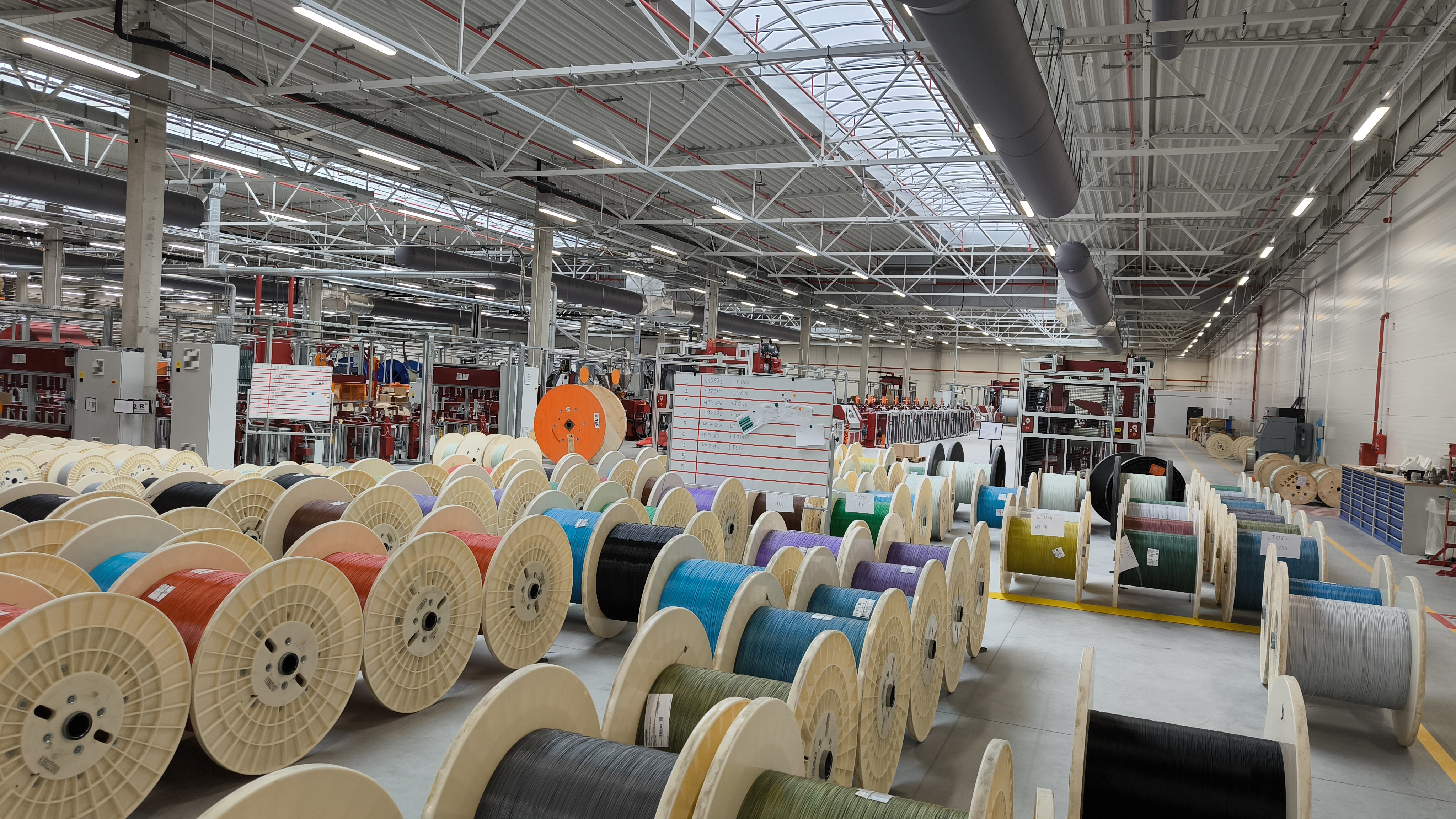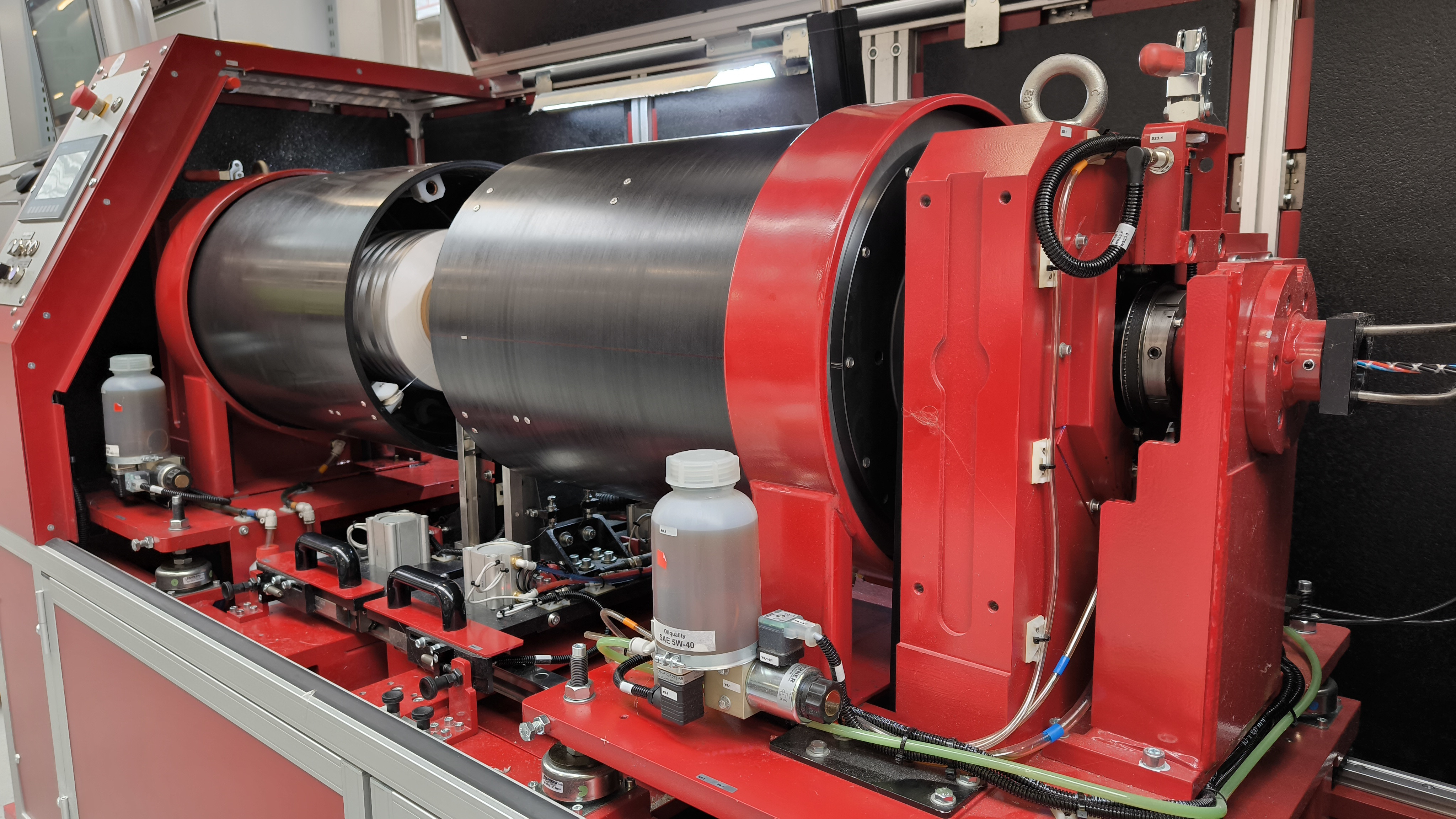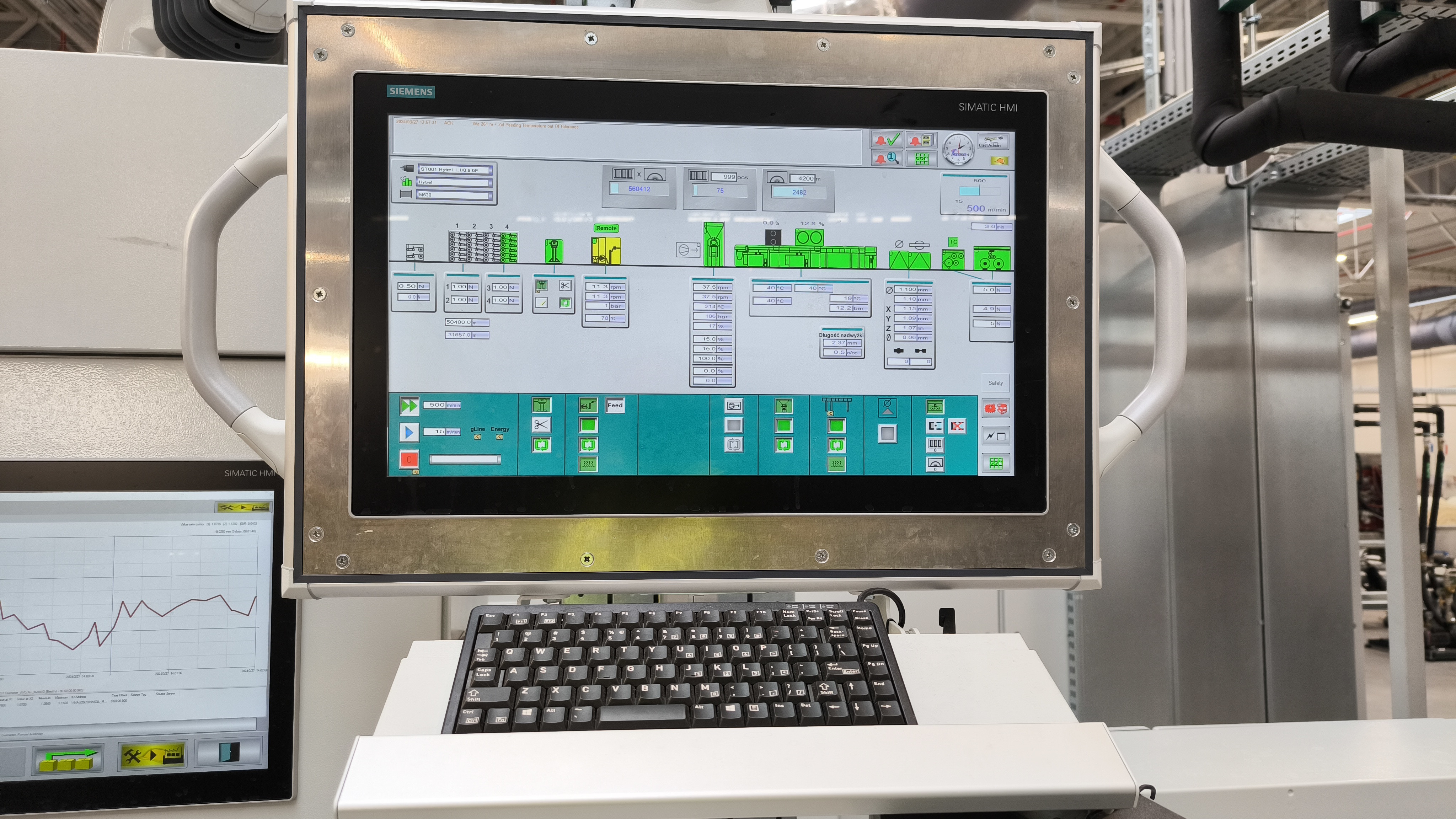Fiber optic cables are a key component of modern communication systems, offering high-speed and reliable data transmission over long distances. The manufacturing process is complex and requires advanced technologies. In this article, we will provide details about the various stages of production and the technologies used.

Preform production – the heart of the fiber optic cable
The fiber optic manufacturing process begins with the preparation of long glass tubes. After being cleaned with hydrofluoric acid, the tubes are heated and their ends are fused together. A mixture of gases, including silicon and germanium, is introduced into the rotating tubes. Through a repeated cycle of heating and cooling, glass deposits enriched with these elements form, leading to the creation of a multi-layered structure. The final product is a glass rod, known as a preform, ready for further processing. The preform is made of pure silica (SiO₂), which is characterized by exceptional transparency and low light attenuation. There are several methods for producing the preform, but the most popular are:
Vapour Axial Deposition (VAD): A variation of the OVD method where both core and cladding materials can be applied together or separately. It allows for the creation of highly doped preforms.
Modified Chemical Vapor Deposition (MCVD): Derived from CVD (Chemical Vapor Deposition) technology used in the electronics industry to create doped layers inside silicon tubes. This process is characterized by high speed, with over 10-fold increased gas flow in the tube. Typically, 30 to 100 layers are achieved.
Each of these methods has specific applications depending on the type of fiber and its intended use.
Production of individual fiber optic strands
After the preform is created, it is sent to a factory specializing in fiber production. The preform is placed in a tower where it is heated to around 2000°C in an induction furnace, making it pliable. Under the influence of this heat, it begins to melt (hence the term “fiber pulling”), forming thin, flexible strands with a diameter typically ranging from 180 to 250 micrometers (for coated fibers). This diameter is closely monitored by various sensors, ensuring the product meets the requirements for a given fiber type (G.652.x-G.657.x). This is an extremely precise process, as a preform with a diameter of about 13-16 cm and a height of about 2 m can produce fibers as long as 5000 km.
Fiber coating – protection and stability
After the fiber optic strands are drawn, they must be coated with protective layers to ensure mechanical strength and protection from damage. These coatings are chosen based on the intended application and environmental conditions the fiber will face. A double layer of acrylic is most commonly used – a soft inner layer and a harder outer layer. This type of coating is used in standard telecommunication fibers. Other coatings, such as fluoracrylate or silicone, are used in more demanding environments – for example, in medical, military, or aerospace applications. Each coating must protect the fibers from bending, moisture, and chemicals.

Bundling fibers into tubes and cable production
Depending on the application, fiber optic strands are grouped into bundles and secured with additional layers of insulation – tubes. Some cables, like subscriber cables or “last mile” cables, contain unprotected fibers. However, we distinguish between two main types of cable construction:
Central Tube Cable (CTC): A cable where one or more fiber optic strands are placed inside a single central tube. The central tube is typically filled with gel (but not always, depending on the cable's purpose), which protects the fibers from moisture and mechanical damage. This construction is commonly used for universal or indoor cables.
Loose Tube Cable (LTC): In this construction, fiber optic strands are placed in several separate tubes around a central reinforcing element. Each tube may contain several fibers and is filled with hydrophobic gel to protect the fibers from moisture, stress, and water penetration along the tube. This construction allows for greater flexibility and easier fiber management during installation.
Soft Tube Cable (STC): A solution known for several years but less popular in Poland than in France. This type of cable contains fiber-filled tubes but does not have a twisted FRP rod. Instead, the rods are located in the outer sheath, with two rods placed on opposite sides. The flexibility of the individual tube in such cables is significantly greater than in LTC cables. These cables are lighter and have a smaller outer diameter. Their application is similar to LTC cables – telecommunications ducts and overhead networks.
Testing and quality control
At each stage of production, fiber optics undergo rigorous quality tests to ensure their mechanical strength and optical parameters. These tests include:
- Optical and geometrical fiber testing: After producing a single fiber optic strand, dozens of optical and geometrical tests are conducted, including:
- Operating wavelength (nm)
- Attenuation (dB)
- Attenuation per km (dB/km)
- Dispersion
- Refraction index
- Numerical aperture
- Cut-off frequency, cut-off wavelength
- Mode field diameter
These tests ensure that the fiber meets the requirements set by the International Telecommunication Union (ITU) for the specific fiber type (ITU-T). Additionally, after each stage of cable production (fiber bundling, tube twisting around the FRP rod, and final product), tests are conducted using a reflectometer to evaluate fiber continuity and ensure that the production stages have not introduced any attenuation.
- Mechanical and environmental cable testing: An essential part of cable production. These tests determine the basic mechanical properties like tensile strength, impact resistance, and crush resistance. Several mechanical and environmental tests are performed, with the most important being in a climate chamber to check the cable's resistance to cyclic temperature changes.

Fiber optic cables play a crucial role in telecommunications, offering fast and reliable data transmission over long distances without the need for signal amplifiers along the way (unlike copper cables). The applications of fiber optic cables are wide-ranging:
Broadband Internet: Fiber optics enable fast internet delivery to homes and businesses, far surpassing other transmission methods (twisted-pair cables or radio internet).
Backbone Networks: Fiber optic cables form the core of global telecommunications networks, connecting countries and continents.
Data Centers: Fiber optics connect servers and devices in data centers, allowing for fast information exchange. The number of such investments is expected to grow steadily in the coming years due to increased traffic in telecommunications networks.
5G Development: Fiber optics are critical to the infrastructure of 5G networks, providing high-capacity and low-latency connections.

 Share on
Share on
 Share on
Share on
 Share on
Share on
